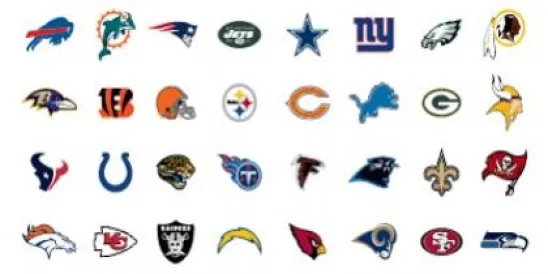Following a breakdown in labor negotiations, a group of current and prospective NFL players have sued the league, claiming that a league-imposed lockout is a group boycott among horizontal competitors (the NFL teams), and a per-se violation of Section One of the Sherman Act. Brady v. National Football League, 0:11-cv-00639-SRN-JJG (D. Minn. filed March 11, 2011).
The named plaintiffs, including star quarterbacks Tom Brady, Drew Brees and Peyton Manning, seek to represent a class that includes current NFL players and next season's rookie class. The players claim that the lockout – which halted players' paychecks, stopped contract negotiations and shuttered teams' training facilities – is a concerted refusal to deal.
In addition to the group boycott claim, the players assert that teams conspired to eliminate competition in the market for professional football players, through a series of anticompetitive restrictions, including:
- The "entering player pool", which establishes a league-wide limit on the total amount of salary that NFL teams can pay to sign rookies.
- The "franchise player" designation, which prohibits a designated player from receiving a contract from any NFL team other than that player's immediately prior team.
- The "transition player" designation, which limits a designated player's ability to receive a contract from any NFL team other than that player's immediately prior team.
- A salary "cap" that fixes maximum amounts for player salaries.Although these rules have been in place for years as part of the league's previous labor agreement, the players claim that the NFL plans to unilaterally impose such restrictions if its lockout is unsuccessful. The players claim each of these restrictions would constitute an unreasonable restraint of trade in violation of Section One.
The suit also asserts a breach-of-contract claim for players under contract to play NFL football in 2011, and a claim for tortious interference with prospective contractual relations on behalf of free agents and rookies. The suit seeks an injunction prohibiting the lockout and restraints on free-agent movement and player salary; treble damages incurred as a result of the antitrust violations; and damages for the contract and tort claims.
The Court is scheduled to hear the players' motion for preliminary injunction on April 6, 2011.
Defendants, including the NFL and its 32 member teams, argue that the court must reject the players' injunction request, because the Norris-LaGuardia Act prevents courts from enjoining work stoppages. Moreover, the NFL argues, the players cannot prevail on the merits of their antitrust claims, because courts do not subject labor decisions reached through collective bargaining to antitrust scrutiny.
Players argue that the so-called non-statutory labor exemption does not apply here, because they have renounced their union, sufficiently distancing the dispute from the collective bargaining process. But the NFL calls this decertification a tactical decision, designed to gain leverage in the bargaining process itself. The labor exemption is designed to shield the entire bargaining process from antitrust scrutiny, the league argues, and so it must extend to the current dispute, notwithstanding the players' assertion that the bargaining relationship is over.
The NFL also argues that the NLRB (National Labor Relations Board) has primary jurisdiction over the dispute. The NFL has a complaint pending before the NLRB, claiming the players did not bargain in good faith, and alleging that the players' decertification is a sham. The NFL maintains that the antitrust suit should be stayed pending a ruling from the labor board.
Both sides have latched onto court decisions from the league's long history of antitrust and labor litigation. The NFL relies heavily on Brown v. Pro Football, Inc., 518 U.S. 231 (1996), in which players asserted an antitrust challenge to league rules fixing salaries for players on developmental squads. The Supreme Court held that federal labor laws prevented such an attack.
The players also cite a host of cases involving the NFL and antitrust issues. For instance, they cite McNeil v. National Football League, 1992 WL 315292 (D. Minn. Sept. 10, 1992), in which a Minnesota jury rendered a verdict in favor of players in their antitrust challenge to NFL rules restricting free agency.
Both sides claim to find support in American Needle, Inc. v. NFL, 130 S.Ct. 2201 (2010), in which the U.S. Supreme Court held that joint licensing of teams' intellectual property, conducted through a corporation separate from the teams, constituted concerted action that was not categorically beyond the reach of Sherman Act Section One.
The players cite American Needle to show that the NFL teams are independent entities for antitrust purposes, capable of conspiring with each other. The teams point to a passage in American Needle stating that their common interests – the success of the league, competitive balance among teams – "provide a perfectly sensible justification for making a host of collective decisions." The league maintains that the salary cap, for instance, is designed to promote competitive balance among the teams.
The labor strife prompted one Congressman to introduce legislation to revoke the antitrust exemption that allows the NFL to jointly negotiate television rights. U.S. Rep. John Conyers (D-Mich.) says his "Prevent Lockout of Athletes This Year" bill is necessary to level the playing field between players and the NFL, because the league used broadcast revenues to build up a war chest to weather the lockout.
Whatever the ancillary fallout, legal pundits have generally predicted that no court will reach the merits of the antitrust issues. Both sides have strong incentives to protect their $9 billion industry, the thinking goes, and neither side is truly willing to risk the 2011 season, which is set to kick off in early September.



 />i
/>i

